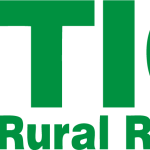
This is a 5-part series (previous parts at https://croptechcafe.org) on the basic cation saturation ratio (BCSR) concept. Summary of Part 1 & 2 was that authors Bear, Graham, and Albrecht of the BCSR concept in the 1940s-1970s suggested narrow basic cation saturation ratios existed, and a balanced cation saturation of the soil’s cation exchange capacity were needed, or plant growth will be reduced. Since then, several major flaws were identified by soil fertility researchers including that the same crop yield and quality can be achieved across a much wider set of basic cation saturation and ratios. Part 3 summarized results from two research studies conducted in Nebraska in the 1970s and 1980s supporting the current scientific consensus that the concept does not hold up. Part 4 highlighted the takeaways from two large scientific reviews published in 2007 and 2017 that assessed previous research and information in over 78 publications. They both concluded that current data from the 1930s through 2016 did not support the BCSR concept.
After reviewing soil sample results in eastern Nebraska with farmers and agronomists over the past 10 years, I do encourage several action items related to base saturation. First, we have plenty of low pH or acidic soils (low base saturation since lots of hydrogen, aka low pH/acid) in eastern Nebraska that are reducing crop yields. We have several lime quarries in the area, so please use the soil buffer pH from your soil test and Ag lime to increase the soil pH. If you want to talk with your Ag retailer or the different quarries about the amount of magnesium carbonates versus calcium carbonates in their lime, that doesn’t bother me one bit. However, I would worry more about the effectiveness/quality of the Ag lime and price first!
We have been fortunate over the past 150 years to rely on naturally high availability of soil potassium while increasing yields and K removal rates. We do have potassium (K) deficiency in eastern Nebraska. In the past several years I have come across more soil test K in the 60 and 100 ppm range on some very common silty clay loam soil series in southeast Nebraska. The UNL critical level is 125 ppm at an 8-inch sample depth. In 2023, Iowa State University moved their maintenance range (w/crop removal application rates) to 171 – 220 ppm with a 6-inch sampling depth on dried soil samples with ammonium acetate/Mehlich-3 extraction (Guide at https://store.extension.iastate.edu/product/5232). For point of discussion, the Marshall soil series was evaluated by Iowa State that is also mapped/exists in Nebraska, Kansas, and Missouri. We do know from previous research that subsoil K does vary substantially in eastern Nebraska by soil series. If you want to be more aggressive with K management, you could use Iowa State recommendations. Yes, Iowa State University K recommendations outperformed the K saturation approach! New Nebraska potassium research is needed, and a grant proposal was recently submitted to conduct a K needs assessment, survey, and field research.
In summary, more than 50 years of new research since the basic cation saturation ratio concept was put forth has led the scientific community to conclude it is no longer a sound approach. There are a few items we learned along the research journey though. Focus on acidic soil management using soil pH, Buffer pH, and Ag lime to increase soil pH (and base saturation will increase too). Sodium saturation is one indicator in monitoring and saline-sodic and sodic soils, but other measurements are needed too. Use sound and updated science to act on like recent potassium research from Iowa State that could have merit and utility in some eastern Nebraska soils until new local research in southeast Nebraska is available. Working with the Nebraska On-Farm Research Network would be a great opportunity to evaluate soil potassium management on your farm, learn more at https://on-farm-research.unl.edu. For inquiries about this and other agronomic resources and programs from Nebraska Extension, contact me at or 402-821-1722. Know your crop, know your tech, know your bottom line at croptechcafe.org


